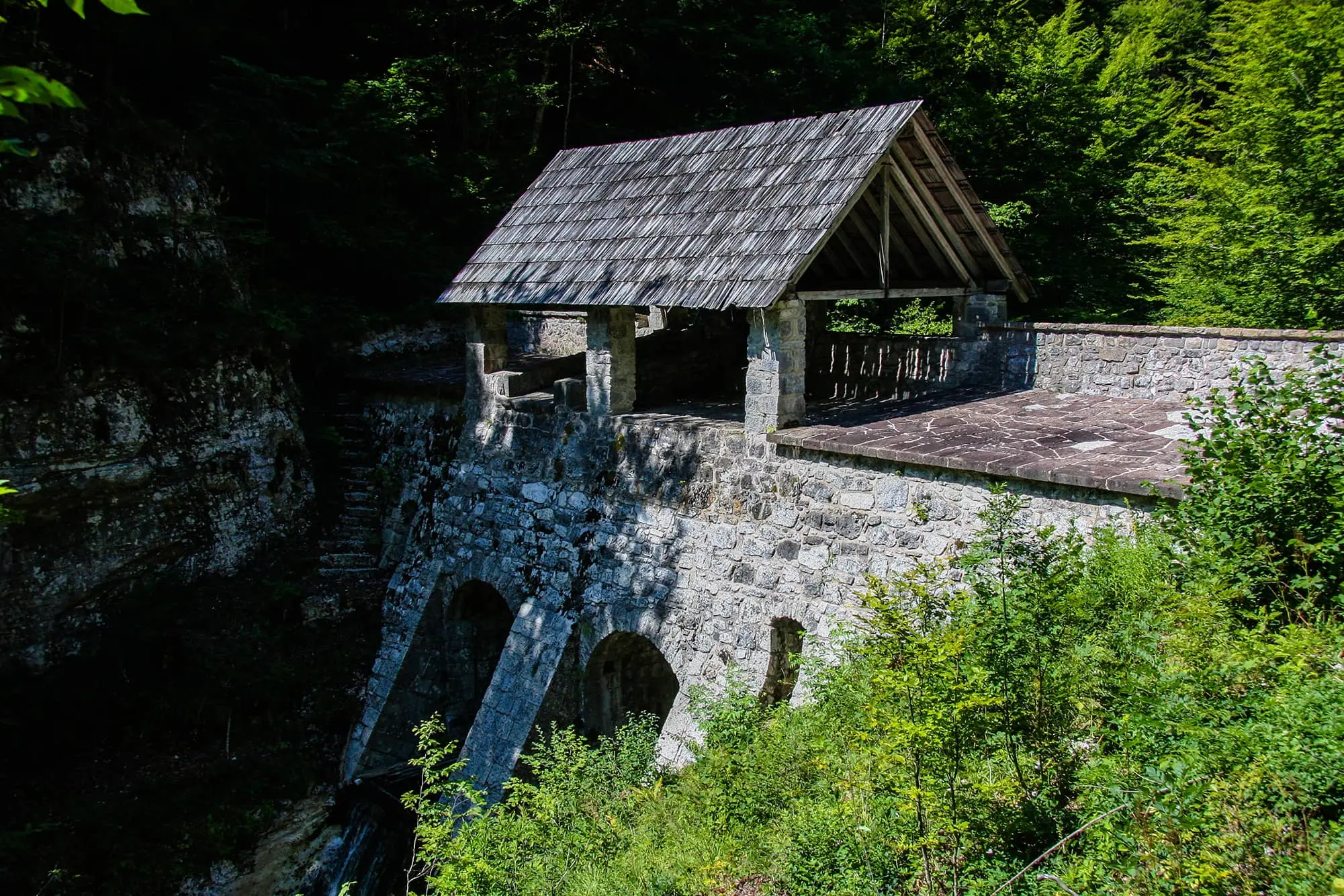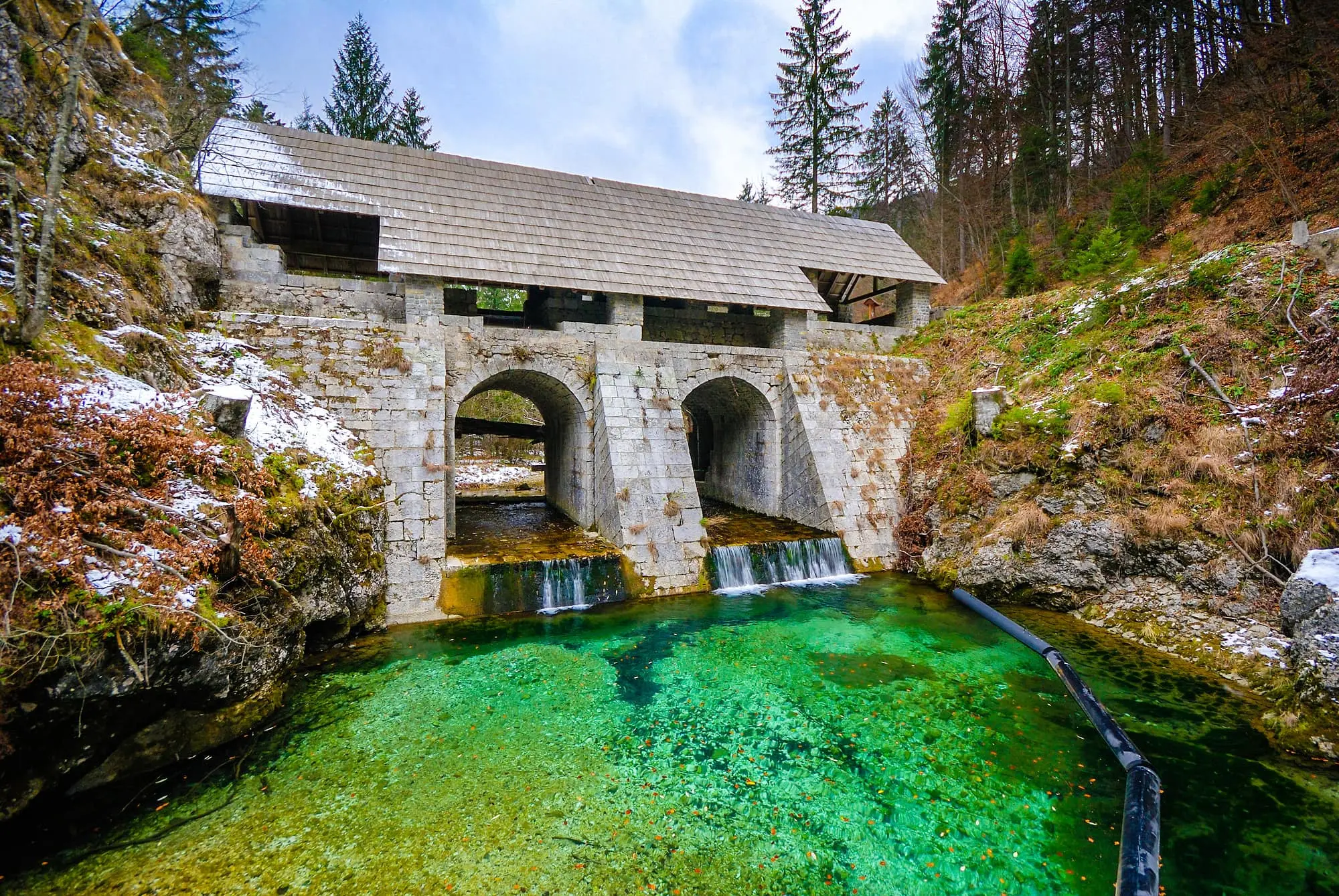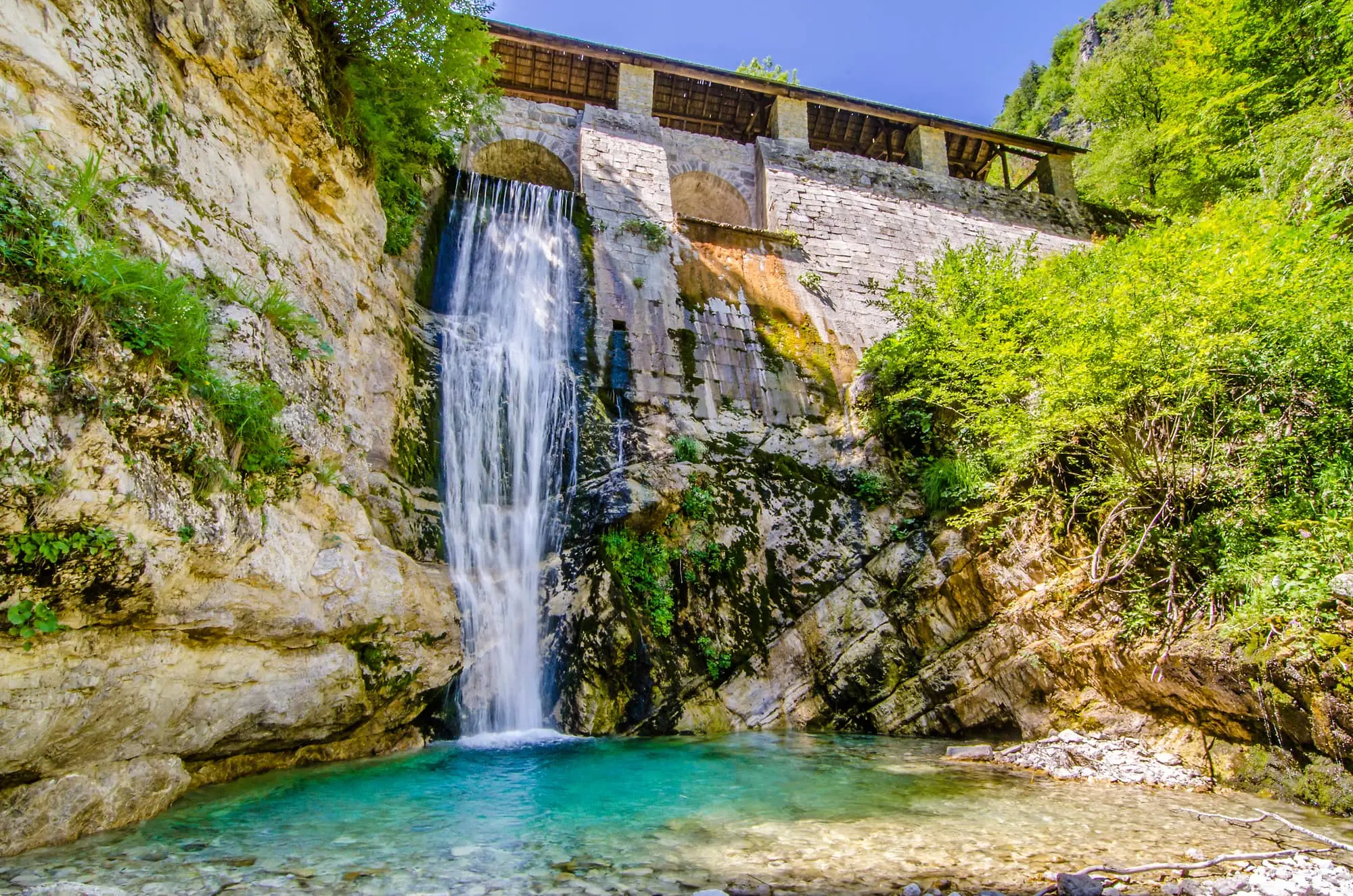Barriers on the Idrijica River are a true hidden treasure of this Slovenian region!
In Idrija, the magical Slovenian municipality, many treasures can be found. Renowned for its bobbin lace and the Slovenian Natural History Museum, known as the Wild Lake, it also conceals beautiful water barriers (slo. klavže), which are part of a much larger story that takes us back to the time when Idrija’s primary industry was mining.
Located in the river highlands, five barriers were constructed on the Idrijica River and its tributaries Belca, Zala, and Klavžarica. These barriers (klavže) were built to collect water and wood to supply the mercury mine in Idrija.

Idrijica, Photo: Mediaspeed, Luka Kotnik, www.slovenia.info
Putrihove klavže (barriers)
Putrihove klavže are barriers built on the Belca stream just 14 kilometers away from Idrija, and a few kilometers from the settlement of Idrijska Bela. Their construction started between 1767 and 1769 as a replacement for already existing wooden barriers.
The barrier is 7.2 meters high, and the length of the crown is 44 meters.

Putrihove klavze, Photo: Jani Peternelj, archive RŽS, www.slovenia.info
Brusove klavže (barriers)
Brusove klavže were barriers built just 12 kilometers away from Idrija, 2 kilometers down the Putrihove klavže on Belca. Their construction started at the same time as a replacement for wooden barriers.
The barrier was 8.9 meters tall and 35 meters in length, and it was a supporting barrier for Putrihove klavže and it could carry 3000 m³ of wood down the stream.

Brusove klavze, Photo: Yerpo, CC BY-SA 3.0
Both Putrihove klavže and Brusove klavže were in function until 1926, when a flood severely damaged the rakes on Idrijca and it was replaced by road transport of wood. It underwent a renovation in the 1990s.
Other barriers built are:
- The third barrier was built on the Idrijca River and was constructed from 1767 to 1772. It had a height of 11.3 meters and a length of 41.4 meters. This barrier operated until 1925.
- The fourth barrier was situated on the Zala River and its construction started in 1772. It had a height of 8.5 meters and a length of 27.3 meters. This barrier was operational until 1849.
- The construction of the last barrier, known as Kanomeljske klavže or Ovčjaške klavže on Klavžarica (also known as Ovcji stream), began in 1812. It had a height of 14 meters and a length of over 32.6 meters. This barrier operated until 1912.
How did they function?
All water barriers were filled with wood within the riverbed. When a sufficient quantity of wood accumulated, the water on the other side of the barrier was released, allowing the stream to carry the wood up to 20 km away to the Idrija mine.
In the city, a robust rake was constructed in the riverbed of the Idrijca to halt and gather the wood in a single location which was then transported to the mine.
Here is an awesome video showcasing how this process used to be done.
To protect the area, Idrijas klavže (barriers) was declared a cultural monument of national importance in 2008, as part of the Zgornja Idrijca Landscape Park, and additionally included on the UNESCO world cultural heritage list as part of the Idrija mercury mine. This year, they are celebrating their 252nd anniversary.
The barriers are now an amazing place to visit, especially if you find yourself exploring Idrija. The road leading to them is perfect for a walk through nature, and it is delightful to watch as the barriers create beautiful “waterfalls” of the perfectly turquoise and clean Idrijica River.

Idrija barriers, Photo: Jani Peternelj, archive Idrija Tourist Board, www.slovenia.info




Leave a Reply